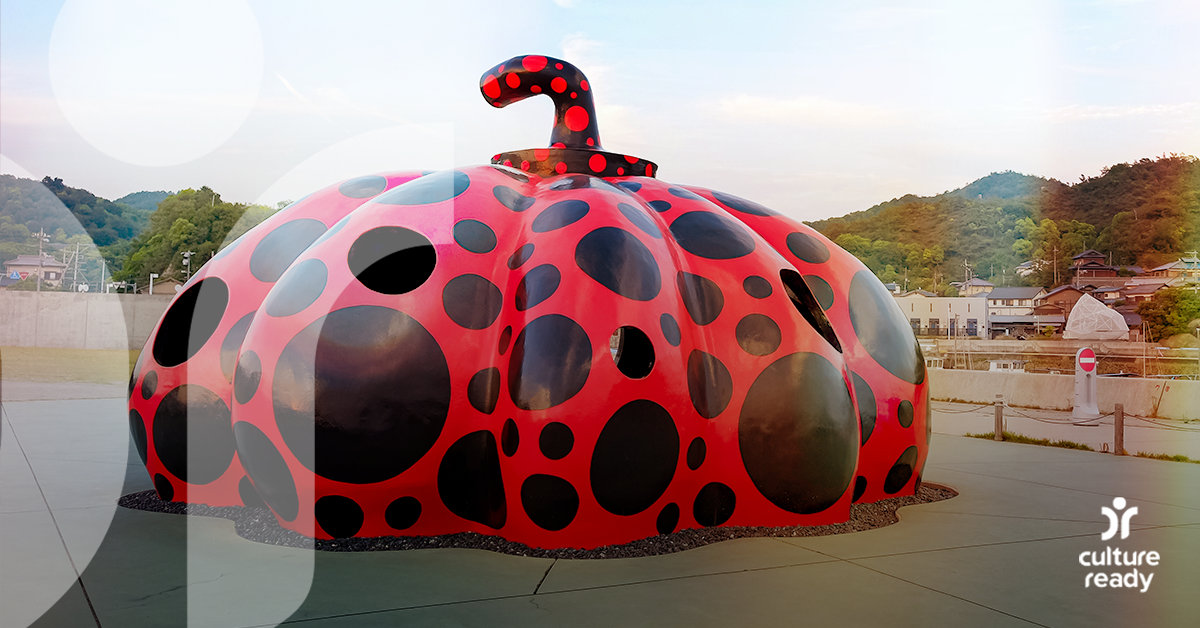The Art Islands of Japan’s Seto Inland Sea
Japan’s Seto Inland Sea is home to an archipelago of 3,000 small islands. Twelve of them are collectively known as the “art islands” because of the eye-catching sculptures, outdoor art installations, and modern art museums that are woven throughout their forests and rural villages.
Naoshima
Perhaps the most popular island is Naoshima, where a giant red and black pumpkin sits at the end of a pier on the island’s south coast. The gourd is the work of sculptor and pop artist Yayoi Kusama, who has been using pumpkins in her art for more than 70 years.
Through the Art House Project, one of the island’s sleepy fishing villages has become a hub for art installations and galleries. Empty houses have been transformed into works of art that reflect the period when they were lived in.
The island also has three museums: The Benesse House Museum features works by modern artists like Andy Warhol, and Japanese artists Shinro Ohtake and Hiroshi Sugimoto.
One of Naoshima’s most impressive structures is the Chichu Art Museum, which is largely underground. Designed by Japanese architect Tadao Ando, the museum features portholes that change the appearance of the artworks as the natural light changes throughout the day.
Teshima
Naoshima’s largest neighboring island houses the Teshima Art Museum. The structure stands on a hill overlooking the Seto Inland Sea, which was once a rice terrace. Although at first glance some might mistake it for a spaceship, the building was designed to look like a droplet as it hits the surface of the water. Two oval openings allow natural elements into the structure, creating a true communion between art and architecture.
In a forest on one of the island’s mountains, 400 wind chimes hang from trees by strips of transparent material. On the strips are the names of visitors’ loved ones. Created by artist Christian Boltanski, “La forêt des murmures” (meaning “the forest of whispers”) explores life and death and is intended to be a place of pilgrimage.
According to the Benesse Art Site Naoshima website, the sound of the wind chimes “summons up the mystery of the soul, paying homage to the memory of those individuals.”
Megijima
The smaller island of Megijima features several unusual art installations. “Ebune Drifters” is a walkthrough exhibit in the shape of a houseboat.
Another artwork, “MECON,” is the creation of Shinro Ohtake. The artist turned the inner courtyard of an abandoned elementary school into an artwork based on the concept of roots. The title of the work, which symbolizes the vitality of life on the island, comes from the “Me” in Megijima and “con,” the Japanese word for “root.”
